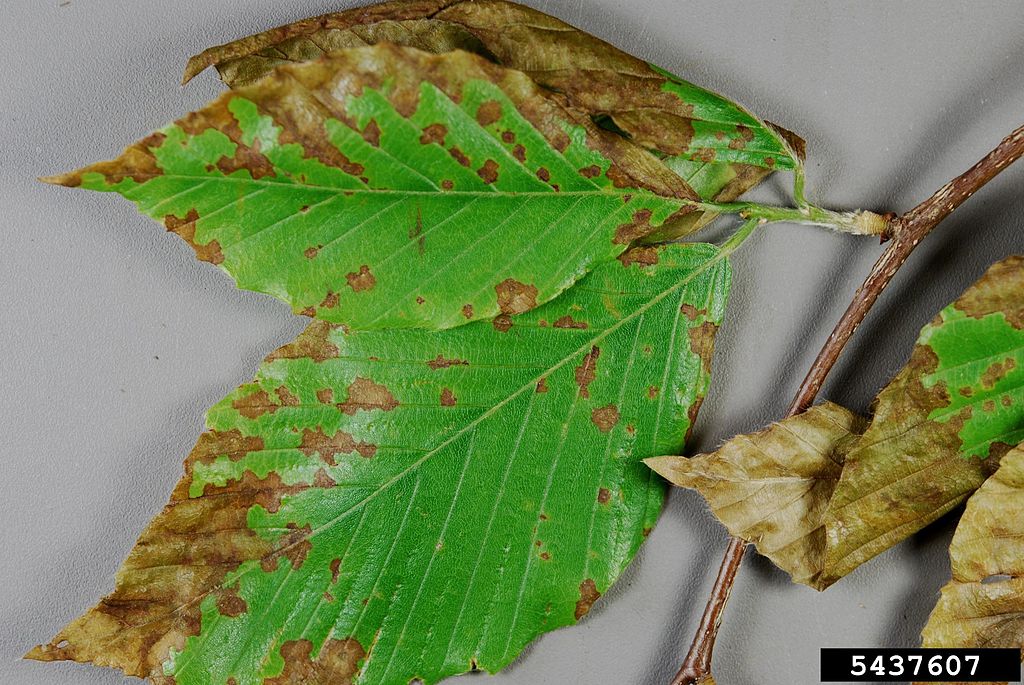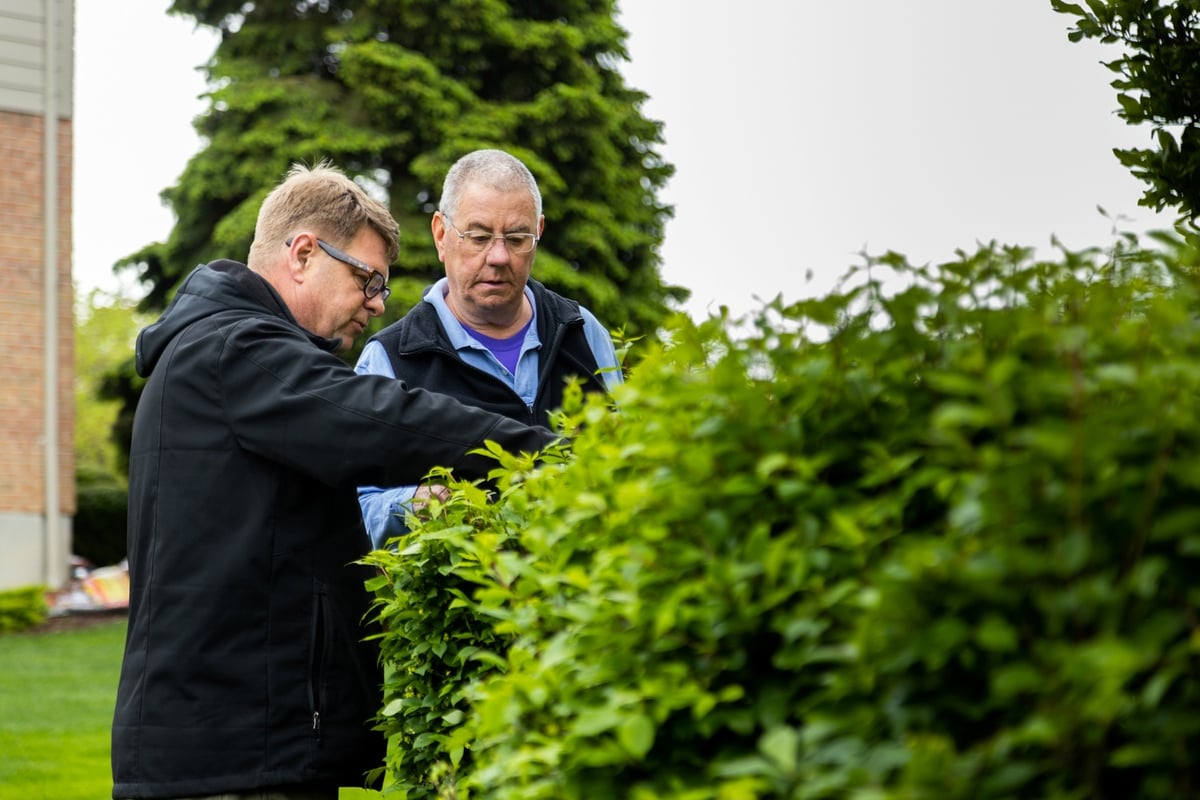Your landscape plants are subject to a number of different problems including pests, environmental stressors, and disease. One such disease is Anthracnose fungus. The good news is that with the right steps, these problems can often be thwarted.
In this article, we’ll take a closer look at how you can spot Anthracnose and what you should do if your plants become infected.
What is Anthracnose Disease?
Anthracnose is a term that refers to a group of related fungal leaf and stem diseases. It can affect a variety of deciduous and evergreen trees and shrubs as well as flowers and other plants.

Anthracnose fungus tends to be more prevalent during a rainy spring or summer season when the hot and wet conditions create a breeding ground for the fungus.
This disease typically starts on the twigs and leaves of the plant and then can spread from there. This is why it’s also sometimes called “twig blight.”
What Causes Anthracnose?
As we mentioned, Anthracnose fungus tends to spread when the weather conditions are hot and wet. But like any plant disease, it comes down to the “Disease Triangle.”

In order for a plant disease to develop and spread, there are three factors that must be present.
-
A suitable environment (the weather conditions)
-
A disease pathogen
-
A susceptible host plant (different plants are going to be more susceptible to different diseases)
Once a disease attacks, you might start to notice symptoms. While the exact Anthracnose symptoms you can expect will differ depending upon the plant species, brown spots are a common and overlapping one.
Other Anthracnose symptoms include browning of the leaf veins, dying buds, and twig death. Anthracnose can also lead to defoliation.
A tree or shrub infected with Anthracnose might look relatively ravaged but the good news is that plants often bounce back.
Treating Anthracnose
While you could pursue an Anthracnose treatment in the form of fungicides, we take a stance that these treatments are usually very costly and not worth the investment for a plant that will likely bounce back.
Instead, we recommend pruning some of the diseased, dying, or dead twigs to help prevent the further spread of the disease. This will also help with the airflow to the plant, which will improve its environment. After all, it’s the wet conditions that cause Anthracnose fungus to spread.
You’ll also want to be careful with watering as watering an infected tree can make the condition worse.
Unfortunately, sometimes plants are simply prone to problems based on the way they were planted. Plants that don’t get enough sun or are planted in consistently soggy soil might be more prone to Anthracnose (and other fungal infections). If your plant is constantly having problems, it might make sense to replace it with something that is better suited to the area it is planted.
Going forward, you can also do more to protect your plants with a proactive Tree & Shrub Health Care program.
A Pro on Your Side
There is no way to fully escape potential plant problems. With threats lurking, there can always be issues that pop up. But the good news is that a plant that is well-cared for will perform better…and ultimately resist potential problems better, too.
This is why it makes sense to partner with a Tree & Shrub Health Care professional.
In addition to getting regular plant treatments, you’ll also gain the peace of mind that a trained Tree and Shrub Technician will be on your property, examining your plants. This professional can make additional cultural recommendations based on potential problems that they see. Often, spotting problems early is a key to success.
While problems like Anthracnose fungus can be a hassle, it doesn’t have to be entirely your burden to bear. A Tree and Shrub Technician can help take away your worries so that you can get back to enjoying your landscape.
If you want to find out more about tree and shrub health care for your Cincinnati, Dayton, OH, or Northern Kentucky home, call us today at 513-697-9090 to get your quote, let us help you choose a stand-alone Plant Health Care program or bundle it with other valuable services, then sit back and relax knowing that your trees and shrubs are in good hands.
Image Source: anthracnose on leaves
